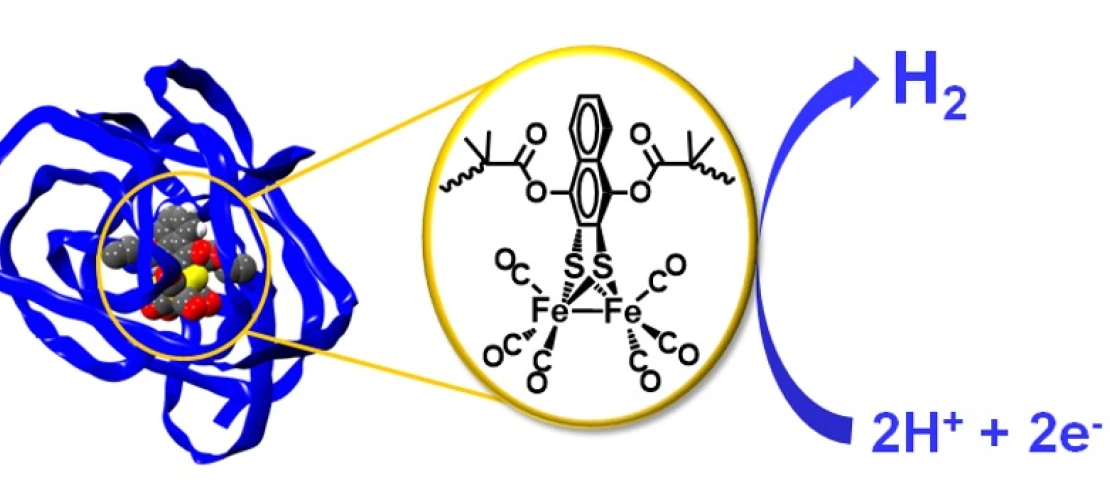Artificial Enzymes for Catalytic Water-Splitting for Clean Hydrogen Production
Diiron disulfide metallopolymers prepared by atom transfer radical polymerization (ATRP)
Metal-containing polymers can combine the useful properties of polymers with the key functions of metal complexes. These metallopolymers are applicable to a wide range of areas such as photovoltaics, stimuli responsive materials and catalysis. Catalysis, for example, includes designing artificial metalloenzymes which can mimic the biological functionalities by engineering the environment of a metal complex using polymeric materials. FeFe-hydrogenase enzyme found in bacteria is an efficient H2 generation catalyst and there has been extensive research on making FeFe-H2ase mimics to produce H2 as a carbon-free energy carrier. The mimics have shown high catalytic activities in organic media, however, limited lifetime, low oxygen stability and low solubility preclude the applicability of the mimics. We, for the first time, made a metalloinitiator from a FeFe-H2ase mimic to grow polymers via ATRP. The polymers not only provide water solubility and oxygen stability in neutral water but also enhance the activity of the complex by tuning the secondary coordination sphere of the mimic. We will discuss our most recent efforts to synthesize a difunctional metalloinitiator and metallopolymers grafted via ATRP.
Key publications:
Pyun et al., Proceedings of the National Academy of Sciences 2020, 117, 32947; Macromol. Rapid Commun. 2020, 41, 1900424; Angew. Chem. Int. Ed. 2019, 58, 7537; ACS Macro Lett. 2018, 7, 1383; Angew. Chem. Int. Ed.. 2018, 57, 11898.

